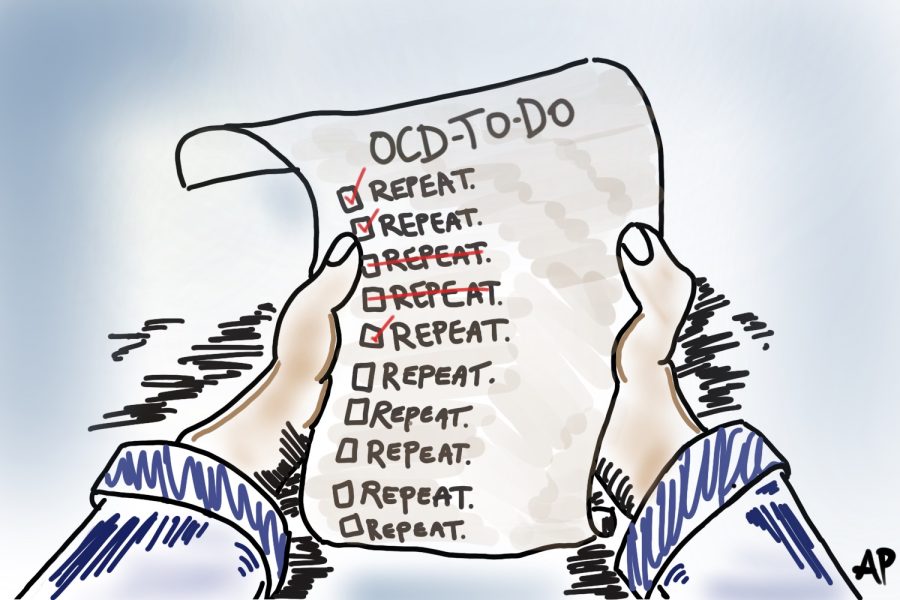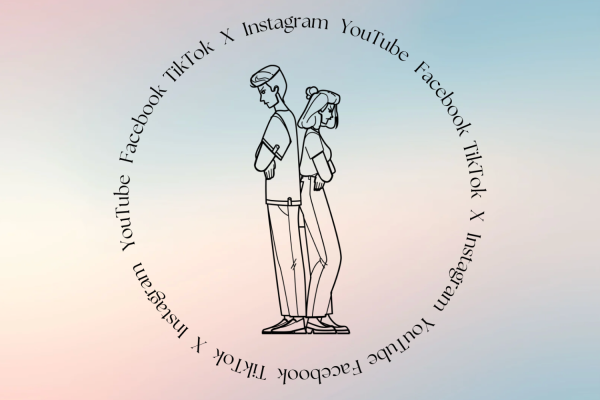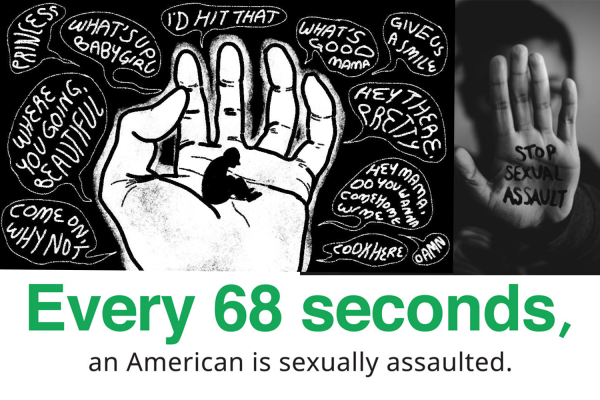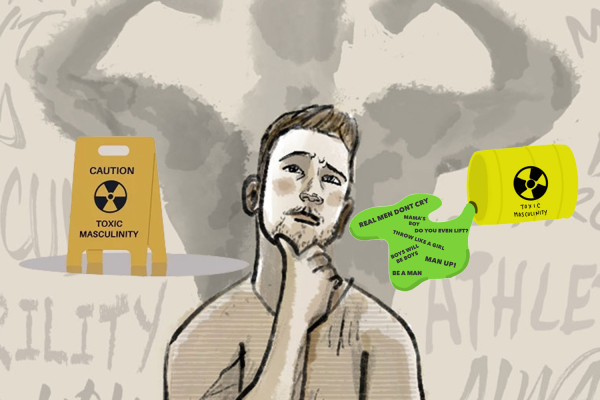Debunking the trivializing of OCD
Individuals should educate themselves on the correct definition and symptoms of OCD to avail in debunking myths associated with the intricate disorder.
Stigma is one of the most significant issues that individuals with obsessive-compulsive disorder (OCD) face, yet the public tends to be unaware that their words and actions can help minimize the suffering of those with the disorder. The media plays a major role in perpetuating misunderstanding, often stereotypically associating the illness with neatness and obsessive cleaning. This distorted narrative ripples into society’s portrayal of the illness, making the public blind to the true complexity of life with OCD. Individuals with OCD are not always the “neat freaks” the media depicts, but instead struggle with underlying symptoms such as overt compulsions, mental rituals, and impaired functioning. While many people without an OCD diagnosis can experience obsessive or compulsive traits, people with OCD cannot simply “turn it off” as some presume. Informing people of the correct definition and symptoms of OCD will avail in debunking the myths people associate with the intricate disorder.
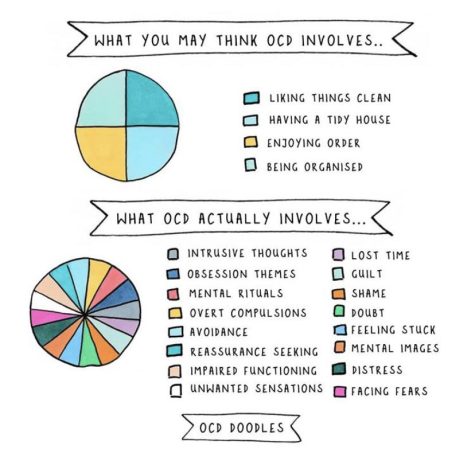
OCD is a chronic disorder that causes people to have uncontrollable and recurring thoughts. A variety of factors could play a role in what initiates OCD, including genetics, social environment, and brain anomalies, but there is no exact cause. As a result, treatment varies from person to person. OCD affects one in 100 adults and can emerge at any stage of life, but it most commonly appears between the ages of ten and 12 or in a person’s late teenage years. OCD-related conditions can include body dysmorphic disorder (BDD), hoarding disorder (HD), and generalized anxiety. About 70 percent of OCD patients who choose to seek the treatment of cognitive behavioral therapy (CBT) or medication see benefits in their daily lives, according to iocdf.org.
Professor Christine Purdon is a clinical psychologist, researcher, and author with expertise in OCD, anxiety, and CBT. She is the Director of Clinical Training for the University of Waterloo’s Doctor of Philosophy (Ph.D.) program in Clinical Psychology in Canada. She strives to further understand the self-perpetuating cycle of compulsions. Professor Purdon discussed the stigma surrounding OCD and how her research encouraged her to remove OCD from the metaphorical waiting room, according to psychologytools.com.
“There are only about ten articles on intrusive thoughts, and I think it’s a really important area,” Professor Purdon said, according to psychologytools.com. “I learned that most people have obsessive thoughts, but only 1 to 2.5 percent of the population have OCD, so I started to wonder why intrusive thoughts affected people who are vulnerable to developing OCD differently.”
As Professor Purdon stressed the lack of research concerning intrusive thoughts and other OCD symptoms, she also affirmed the need for awareness to comprehend the disorder. This absence of information influences the general public’s misperception of the disorder and leads people to categorize its symptoms with broad and limiting traits.
Teenagers toss the phrase “so OCD” around so commonly that society becomes desensitized to how their prattle may disconnect people from the reality of the illness. If public stigma and prejudice prevail, these distorted connotations will continue to lead to self-discrimination and shame in individuals who actually struggle with OCD. The stereotypes can push OCD patients to internalize the public’s misunderstanding, inevitably causing them to avoid seeking treatment or professional help. This shame becomes a part of their identity and makes it even more difficult for them to lead a life that does not revolve around their unpredictable disorder.
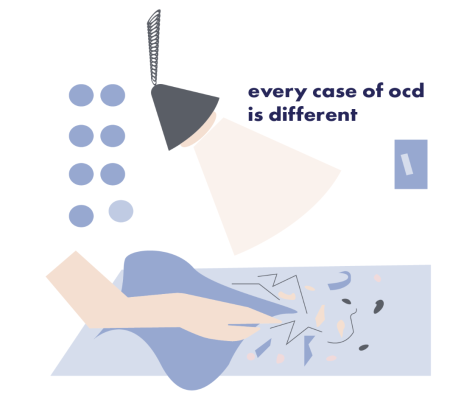
A person’s tendency to repress OCD symptoms may begin at school. A student may appear to be daydreaming, distracted, or even lazy when they are simply trying to relieve their distress, according to adaa.org. This is frustrating for both the student and the teacher. However, if professionals train school personnel to identify the observable symptoms, they may aid in initiating a better plan to assist their students. Students who are struggling with OCD would then have the support needed to feel less compelled to respond to their urges or obsessions.
Life in the workplace can also discourage individuals with OCD from seeking help. People with the disorder tend to hide their uncontrollable thoughts and actions from others out of fear of living under the label of someone who is “mentally ill.” As individuals with OCD obsess over their intrusive thoughts, they simultaneously try to concentrate on the task at hand, causing further anxiety and stress, according to madeofmillions.com. Certain people can also trigger negative thoughts, which causes the person to escalate their avoidant tendencies.
Instead of placing negative labels upon people with OCD and creating misconceptions about the disorder, individuals should address the illness with recognition and acceptance. Many people may experience compulsive or obsessive traits, yet society must do its part to recognize that people with OCD cannot escape these habits as others can. Furthermore, disassociating cleanliness and neatness from the disorder is a step in the right direction. With proper treatment and support, people with OCD are able to lead full, productive lives.
Although it is difficult to confute the OCD myths that society perpetuates, the general public must educate themselves on the underlying and complex reality of the disorder. If misunderstanding persists, individuals will fear branching out if they do not fit the conventional OCD symptoms. Contrary to the “neat freak” portrait that social media paints, the intricate disorder is egodystonic and not an adjective.
Featured Image by Ana Patricio ’24

Ana is immensely grateful to serve as this year’s Co-Editor-in-Chief and Social Media Manager. Approaching her third year at the King Street Chronicle,...

